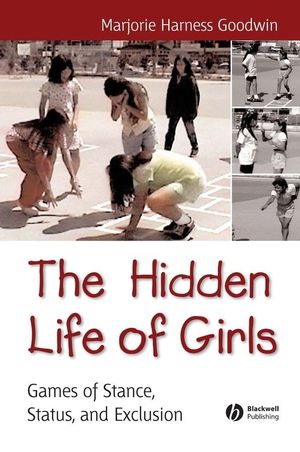The Hidden Life of Girls: Games of Stance, Status, and ExclusionISBN: 978-0-631-23425-8
Paperback
352 pages
December 2006, Wiley-Blackwell
 This is a Print-on-Demand title. It will be printed specifically to fill your order. Please allow an additional 10-15 days delivery time. The book is not returnable.
Other Available Formats: Hardcover
|
||||||
“Combining ethnographic fieldwork in neighborhood and school grounds with micro-analysis of both discursive and non-discursive situated practices, it offers a powerful and rare look into the social dynamics of girls' social life. The author moves within and between the various data sets she has gathered over the years with elegance, offering multifaceted analyses of particular interactional moments and communicative practices in ways that make them speak to and illuminate each other. The book, then, offers both rich and rigorous ways of looking at children's naturally situated conduct that speak to larger concerns of social science research. It is clearly of great value to students of language and social interaction, interpersonal communication scholars, and researchers concerned with the development of communication competence or with group processes, to mention but some of the more obvious subfields in our discipline for which this book will prove to be a great asset.” (International Journal of Communication, Spring 2008)
“A powerful [and] provocative read… Highly
recommended” (Choice)
“Hidden Life develops into an engrossing read … .One
of Hidden Life’s strengths is Goodwin’s diverse sample
of Latino, Asian, African American, and Caucasian
girls.”
(Feminist Collections)
“Rich analysis … .Full of rich and diverse data … and important policy recommendations. Shines a bright light on the complexity … of preadolescent girls.” (Sex Roles)
"This fascinating and important book gives us a rarely seen inside perspective on the dynamics of girls' social negotiation, contestation, and hierarchy. Critically addressing key misrepresentations and omissions of children's life-worlds in previous scholarship, Goodwin provides a much-needed counterpoint to that research and puts girls' experiences squarely at the center of her analysis." –Mary Bucholtz, University of California, Santa Barbara"As she did with He-Said-She-Said in 1990, in this book Goodwin sets a new standard for the ethnographic study of social interaction. As the title suggests, standard techniques of the social sciences leave much of girls' social life hidden from view and insulated from analysis. Goodwin's book offers an important corrective: Through a focus on the actual practices of talk and embodied conduct, Goodwin shows how in constructing the hierarchies, divisions, and exclusions constitutive of their social groups, these girls define their own moral order." –Jack Sidnell, University of Toronto



